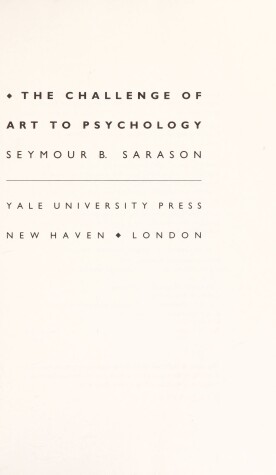Artistic activity is universal in young children. Why does this activity diminish dramatically with the passing years?. This book argues that all human beings are born with the capacity to organize and express their unique vision of the world in some creative fashion, but that society extinguishes this capacity through the cultural values that subtly but powerfully exert influence in and out of our schools. Seymour B. Sarason contends that our culture does not place any premium on the artistic activity of young children, preferring to focus on reading, writing, numbers, and objective thinking as necessary for the good life. Children are taught that artistic expression is a talent that few possess and that there is an insurmountable gulf between the accomplishment of the great artists who have this talent and the output of everyone else. Yet, says Sarason, if appropriately encouraged, individuals who have never been before given evidence of creative talent can learn to participate in artistic activity.
Sarason describes how artist Henry Schaefer-Simmern and poet Kenneth Koch taught their respective skills to mentally retarded, institutionalized individuals, to black and Hispanic children in a ghetto school, and to old, ill, depressed, uneducated people in a nursing home. While Sarason recognizes that not all people are capable of developing into great artists, he demonstrates that all people can and should derive satisfaction and a sense of growth from some level of activity in an artistic medium.
- ISBN10 0300047541
- ISBN13 9780300047547
- Publish Date 26 September 1990
- Publish Status Active
- Out of Print 15 October 1998
- Publish Country US
- Imprint Yale University Press
- Format Hardcover
- Pages 202
- Language English
